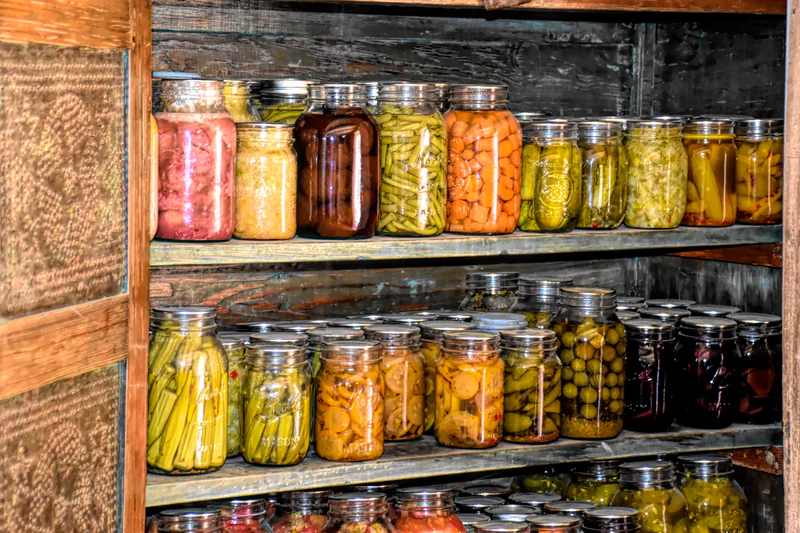Learn the essentials of food safety The Science of Food Safety

An effective food safety management system requires a basic, scientific understanding of how food contamination occurs and how food safety practices can help mitigate these high-risk scenarios.
Without a rational foundation of how these processes work, managers and employees will struggle to recognise problems as they arise and how to address them. That means your team could discover issues by the time they’ve grown too large to control.
So let’s dive into the science of food safety to get a basic idea of how food safety works.
Microbiology 101 and Food Safety
Many food safety concerns stem from microorganisms, which include bacteria, moulds, viruses, and single-celled parasites.
These tiny living organisms can rapidly multiply at room temperature, and sometimes even under cold storage. Bacteria, in particular, can double in population every 20 minutes and their numbers can exceed millions within hours on a food product after touching only the handful of microbial cells that typically contaminate surfaces. Some can even adapt to aggressive environments and persist despite efforts to clean, sanitise, or disinfect food preparation environments.
They can invade the body, produce toxins, and cause life-threatening disease. The most common microorganisms that can cause food poisoning in the UK include Campylobacter, norovirus, Clostridium perfringens, Salmonella, Listeria, and E. coli O157. The challenge in all food safety programs is to reduce or eliminate the possibility of these pathogens from spreading and contaminating food fed to the consumer.
One of the most effective ways to ensure food is free from contamination is heating. Food cooked to 70°C or above for 2 minutes or longer rapidly kills or destroys microorganisms. Temperatures at or above 60°C create an inhospitable environment for microorganisms to grow, and so food can be held at those temperatures nearly indefinitely.
For temperatures below 8°C, most microorganisms cannot multiply and produce toxins and so refrigerated food can remain relatively safe for several days or weeks before spoiling.
Between 8°C and 60°C is known as the danger zone. This temperature range provides optimal conditions for bacteria and other microorganisms to proliferate rapidly. Food should not remain in the danger zone for more than two hours, otherwise the populations of these microorganisms will have exponentially multiplied to dangerous levels.
Here, calibrated digital thermometers are the first line defence against microbial contamination, and serve as essential monitoring tools to ensure food is kept at safe temperatures. Other weapons available to help fight the spread of pathogenic microbes include disinfectants, sanitising wipes, hand-washing with soap and hot water, and food-grade acids such as vinegar or citric acid.
Food Allergens and the Immune System
Another food safety challenge is food allergens. Consumption of allergenic foods by individuals with food allergies can easily cause harm and injury to the consumer.
The 14 most common food allergens in the UK are found in celery, gluten, fish, eggs, milk, mollusks, crustaceans, peanuts, sesame, soybeans, sulphites, lupin, mustard, and tree nuts.
But how exactly do these allergens cause an allergic reaction?
A food allergy occurs when the immune system overreacts to a specific compound found in these foods. Usually, the substances in question are proteins. The immune system incorrectly identifies these food proteins as foreign, mistaking it to be derived from a pathogenic microorganism that the immune system must defend against. Even extreme minute concentrations from unwashed equipment or mishandling of ingredients can trigger the immune system into overdrive.
Unfortunately, cooking cannot destroy allergens as most allergenic proteins are resistant to heat.
Some allergenic substances, like sulphites and nitrites/nitrates from celery, change the structure of the proteins native to the human body and produce modified proteins that the immune system also mistakenly identifies as foreign.
The body summons a battery of immune cells, antibodies, and other immunological substances to induce an elevated inflammatory response that goes beyond a normal reaction to natural foreign invaders.
While most food allergies cause minor symptoms, such as tingling in the mouth, red rashes, and swelling, some individuals have severe reactions that can cause abdominal pain, shortness of breath, difficulty swallowing, and even death.
Detecting Food Contaminants
Unfortunately, few contaminants are visible to the naked eye. While many bacteria and moulds produce changes in food that can be detected by sight and smell, other sources of contamination are not as easily traceable. These include allergens, toxins, chemicals, spores, viruses, and highly virulent pathogens.
For effective food safety programs, sources of contamination should be routinely monitored. These types of contaminants require specialised methods and equipment to detect and quantify. For example, an ATP hygiene monitoring system can be used on-site to evaluate the relative levels of bacterial contamination on surfaces and equipment. Commercial allergen test strips are portable solutions that can be used to identify the presence of food allergens in a food production environment.
However, such detection systems can only provide reliable information regarding the presence of general contaminants, and not quantifiable data.
Laboratory testing can be used to precisely evaluate and quantify the concentrations of a high-risk contaminant being harboured in the food preparation or production area. This kind of granular data can help teams make important food safety decisions and develop new policies that reduce the risk of future contamination.
That said, as the cost and time of sanitising, on-site testing, and third-party testing can rack up over time, it pays to know what types of potential contaminants could be causing food safety issues in your unique situation. Combating food safety issues begins with solid education and training.
Tayl offers comprehensive online courses for food safety training and compliance. We’re an accredited provider of essential courses that are simple, quick, and affordable to help your team grow in the face of ongoing food safety challenges.
From the blog



Eating Out Safely After COVID-19
After lockdown, 75% of people said that hygiene would play a role in deciding where to dine out. That's a change from nobody to almost everybody. To ensure that guests feel safe and can relax while dining out, training is key. Communicating your hygiene practices effectively to both your staff and customers will help rebuild trust in the restaurant’s safety.